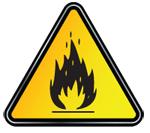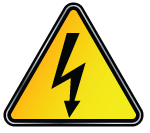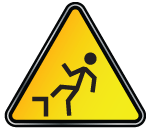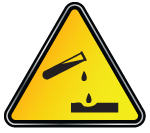SAFETYSERVICESNETWORK
Avoid disasters... keep your home and workplace safe
We provide safety services for your home or business
–– WHY CHOOSE US ––
––––––––––––– WHY CHOOSE US –––––––––––––
The Safety Services Network, who are they? And what can they offer my Business?
We are a national group of locally owned and operated independent family businesses with a real passion for Work, Health and Safety.
We are premium service providers based in all Australian States and Territories.
What we do is help you manage the impossible, we can service your locations from Brisbane to Ballarat, from Port Lincoln to Penrith and just about everywhere in between. You won’t have to worry about dealing with hundreds of contractors, wasting your time and money, you deal with one person, no overseas call centres, we are NOT a franchise so you aren’t making a franchisor rich, you’ll get the best service at a market competitive price.
We have a range of services that makes us the ultimate One Stop Safety Shop.
We don’t offer quotes over the phone, we come out and talk to you in your business about Work, Health and Safety in your business and provide you with the information you need to make an informed decision.
Call Paul our National Operations Manager on 0468 472 333 or email
paul@safetyservices.network
–– OUR SERVICES ––
–––––––––––––– OUR SERVICES ––––––––––––––
We offer the following services:
• Testing & tagging of electrical appliances and leads.
• 3 Phase power testing.
• Residual current device testing (safety switches).
• Microwave leakage testing.
• Replacement of faulty plugs.
• Supply of safety rated power boards and leads.
• Testing and maintenance of exit and emergency lights.
• Servicing of portable fire extinguishers and fire protection equipment.
• Domestic smoke alarm testing and maintenance, servicing real
estate agencies and private residences.
We can produce, supply and / or install:
• Small to medium business specific WHS
compliance packages.
• Evacuation Diagrams.
• Evacuation Procedures.
• First Aid Kits.
• Portable fire extinguishers and fire blankets.
• Photoelectric Smoke Alarms.
• Minor in store equipment.
–– WHS LAWS ––
––––––––––––––– WHS LAWS –––––––––––––––
What are the Work, Health and Safety (WHS) Laws?
Are you protected?
As you might be aware, the Work Health and Safety Act 2011 (WHS Act 2011), has replaced state based Occupational Health and Safety Legislation from January 2012. Under the new WHS Act an employer/business owner, Person Conducting Business or Undertaking (PCBU), must provide a safe working environment (for all employees and visitors), at all times. This is even more important when members of the public regularly visit a business or commercial premises. Electrical hazards in the workplaces are major cause of trauma, injury and death to Australian workers.
There are significant fines for non compliance with the WHS Act and local councils are requiring all businesses to take the steps necessary to protect their staff and visitors from electrical hazards.
To mitigate your risk we test and tag all corded electrical appliances (240 and 415 volt) to Australian Standard 3760 – 2010, (this is now a mandatory requirement under the WHS Act 2011), every 12 months for most environments and every 6 months for repair workshops and places of manufacture. We inspect your business and advise you of any hazards that can be remedied with a quick and inexpensive fix. As a FREE additional service we check your first aid kit contents and make sure all items are included and up to date. We inspect your fire extinguishers and fire blankets to ensure they are not expired and are being serviced on schedule, if they aren’t we can do this for you.
We look out for you, it’s our job and duty of care.
You can protect your livelihood and those who work for you by contacting us and we can help you eliminate or mitigate your risk.
Call Paul our National Operations Manager on 0468 472 333 or email paul@safetyservices.network
–– SMOKE ALARMS ––
–––––––––––––– SMOKE ALARMS ––––––––––––––
Domestic/Rental Property Smoke Alarm Service.
We Love Smoke Alarms! Why?
Nothing in your home can protect the lives of you and your loved ones like a working Photoelectric Smoke Alarm.
We work with homeowners and a number of Real Estate Agencies across Australia and our Smoke Alarm servicing package is tailored especially for your specific needs, not a one size fits all approach. We are small enough to give that personal touch and we offer something the competition don’t and can’t, we don’t and won’t take over your rent register, we will work with your staff and with your tenants and we will negotiate the best servicing package for your landlords.
We are landlords ourselves and like us most landlords prefer to receive a service they pay for.
We only install Photoelectric Smoke Alarms and for properties with non-flued LPG or Natural Gas Heaters we recommend the fitment of a Carbon Monoxide Alarms.
Call Paul our National Operations Manager on 0468 472 333 or email
paul@safetyservices.network
Only a working Smoke Alarm saves lives.
–– LINKS/INFORMATION ––
–––––––––––– LINKS/INFORMATION ––––––––––––
Smoke Alarms what are the rules?
What is the difference between Ionisation and Photoelectric?
FACT: Ionisation Smoke Alarms are very slow at detecting slow smouldering fires, but quick to detect flaming fires.
Flaming fires produce more small smoke particles and this type of fire will be more quickly detected by an Ionisation Smoke Alarm, when we say more quickly it is only a matter of seconds between the reaction time of a Photoelectric and an Ionisation Smoke Alarm. Unfortunately, most house fires begin as a smouldering fire with large smoke particles, so this type of fire will be more quickly detected by a Photoelectric Smoke Alarm.
A Photoelectric Smoke Alarm react up to 20 minutes earlier than an Ionisation Smoke Alarm and will warn occupants before the fire has become a fast flaming fire, most house fire fatalities occur because of smoke inhalation, not from the actual fire itself.
How a Photoelectric Smoke Alarm works
A photoelectric detector uses a special light source and a light sensor to measure smoke density. The light source is constantly on but the light beam is angled away from the light sensor. When smoke enters the chamber, the smoke particles scatter some of the light toward the sensor. As the smoke density increases, more light is scattered towards the sensor. When the amount of light scattered into the sensor reaches a predetermined threshold, the unit goes into alarm mode and the alarm will sound to alert occupants.
How a Ionisation Smoke Alarm works
Ionisation Smoke Alarms are sub-micron particle detectors that use a small amount of radioactive material to detect hot, invisible particles from cooking or an open flame. They do not detect visible smoke, even though they may appear to in some cases. Most people have experienced a nuisance alarm given out by Ionisation type Smoke Alarms, this type of Smoke Alarm is sensitive to small smoke particles, it will respond more quickly to particles typically given off during cooking, even where there may be no danger, this explains why over half of all installed Ionisation Smoke Alarms have had their battery removed due to the nuisance factor.
The worst part about Ionisation Smoke Alarms is they are also considered low level nuclear waste and contain a small amount of radioactive material Americium 241.
LINKS
Carbon Monoxide Safety
Both Glenn Lazarus and the Northern Territory Government know the truth about Ionisation Smoke Alarms.
Check out Glenn's speech about the importance of Smoke Alarms... READ GLENN'S PRESS RELEASE >
Facts about Ionisation Smoke Alarms
FACT: Australian Government (CSIRO) test data since 1993 show ionisation alarms fail to activate in Australian Standards testing until more than three times the maximum safe limit set for photoelectric alarms.
FACT: Legislation to mandate photoelectric smoke alarms has been enacted in Australia’s Northern Territory and the U.S. states of Iowa, Maine, Massachusetts, Vermont and numerous cities and municipalities.
FACT: The June 2006, official position of all Australian and New Zealand Fire Brigades states, “That all residential accommodation be fitted with photoelectric smoke alarms . . . Ionisation smoke alarms may not operate in time to alert occupants early enough to escape from smouldering fires.”
FACT: Standards Australia has revised the Australian Smoke Alarm Standard (AS3786-1993). Despite repeated attempts, the ABCB has refused to adopt it into the Building Code of Australia (BCA).
FACT: U.S. Federal court judges declared an ionisation smoke alarm to be "defectively designed" and its failure to be “a legal cause of deaths” (Sheila Hackert v First Alert Inc. March 2008).
FACT: Since the 1996 edition of the BCA, photoelectric detectors have been mandated in all Australian hospitals.
–– SAFETY FACTS ––
–––––––––––––– SAFETY FACTS ––––––––––––––
-
47%
Buttonof Smoke Alarms failed
our testing. There is a house fire every 26 minutes in Australia.
-
30%
Buttonof properties don’t have a working Smoke Alarm. The Fire Brigade Fire Investigation and Research Unit research indicates that 50% of all residential house fire fatalities may have been prevented if homes had working smoke alarms.
-
INSURANCE
ButtonIs your insurance void? Insurance companies are very strict with business insurance, if your fire equipment and test and tag is not up to date, it is likely your insurance will be void.
-
SMOKE ALARMS
ButtonInsurance companies and fire investigators are now requiring a paper trail to be certain that working Smoke Alarms are installed in rental and residential homes.
–– CONTACT US ––
––––––––––––––– CONTACT US –––––––––––––––

Call Paul our National Operations Manager on
0468 472 333
or email:
paul@safetyservices.network
CONTACT FORM
Thank you for contacting us.
We will get back to you as soon as possible
Oops, there was an error sending your message.
Please try again later
Please try again later





